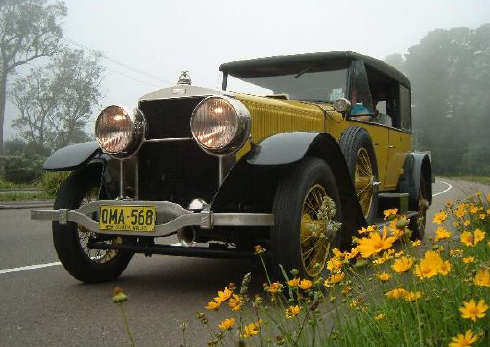
I just read an article in this month's EVO magazine about future European Union emissions standards and how they will affect sports car manufacturers. In this article author John Griffiths reports that the EU is thinking of a ban on cars that get less than 35 miles per gallon, and cars that produce more than 130G C02/km. He writes that both Porsche and Italian Supercar manufacturers Ferrari and Lamborghini will pull out of the European auto market because it is impossible for them to meet emissions and fuel economy standards and still have similar performance to what they currently have.
What does this mean for the automobile in Europe, in the world?
Clearly the automobile as we currently view it is doomed. In as little as 10 years the EU could legislate the Internal Combustion Engine out of existence, and other governments will follow. Is the US, Canada, Australia or Japan next? I think so. We now need to start thinking about real, viable solutions to this problem. Obviously we the general public won't be able to change world wide government policy, but what we can do is come up with solutions to work around the pollution problems. There are alternative already out there but how many are actually viable?
Alternative fuels are very costly to the environment, plant based fuels reqire a lot of fossil fuels and toxic pesticides and herbicides to plant and grow them and with the emerging worldwide food shortage they become the ultimate in feel good, opulent, excessive consumption. Those fields should be growing food to feed people not our cars. Alt-Fuels are out, what about Hybrids?
The Hybrid relays heavily on the Internal Combustion Engine and outside of the city during highway cruising virtually never uses its electric motor. Hybrids also do not do much to improve on CO2 emissions. A Toyota Prius that drives 10km in the city will spew 1045g co2, not very good. Clearly the Hybrid will be out. What about pure electrics?
Electrics are very good if you don't want to drive across continents in a single trip. Right now the best electrics could give about 300miles range on a single charge, that's great, but what if you want to drive from California to New York? In today's car you could do it non-stop in 2-2 1/2 days if you're not speeding. With an electric you have to stop every 300 miles to recharge it, and there are currently no quick ways of fully recharging a car. You must stop and let it charge overnight. The trip would take weeks!
There is one technology left, it's a technology that most people think of as old fashioned, impractical, and unsafe. That technology is Steam. At the turn of the 20th century in America, steam cars were the second most common vehicle on the roads. It was second only to Electrics, it was second because it was expensive, and somewhat dangerous, but it was well know.
Steam technology and operation was well know and well understood at the turn of the century. Steam died out after World War One because boiler technology had not been able to advance as fast as Internal Combustion Engine technology, and Steam car manufactures stuck with tried and true manufacturing techniques common the the 19th century carriage industry, in short they did not adapt to new technology. But the steam car works.
In 1906 the Stanley brothers of The Stanley Steam Car Company set the land speed record with one of their cars in 127.659MPH. On the second run, the run in which the car crashed it was rumored to have been going more than 170MPH. Production models of the Stanleys cars could do 100MPH but there was a better steam car. It was the Doble Steam car, only 40 were produced in the late 20s and early 30s but they were and still are the best steam cars ever produced. By the 1920's boiler technology had caught up with other technologies and it only took 45 seconds to make a full head of steam as opposed to the hour or so it would take with 1900s technology.
The Doble had the potential to restart the steam car market but because Abner Doble, the designer was such a perfectionist he would not let any car out the door with out first installing the latest technologies so the cars cost so much and were so slow in production that the steam car died with the Doble.
The point of all this history is to show just how practical steam still is. The last of the steam cars were fast, convenient, fuel efficient, and luxurious. They had great range in the order of 500 miles or more and they ran on any fuel, and you would fill up both the fuel tank and the boiler(with water) just like you would with an internal combustion engine. Why is this technology in the past?
We now have on demand water heaters in our homes that provide instant hot water the second you turn on the faucet. Why can't this technology be adapted to boil water instead of just heat it. We now have super efficient steam turbines capable of thousands of horse power and virtually no maintenance. All the systems nessesary for the modern steam car exist; fast efficient boilers, and efficient engines that are also lightweight. The boiler could be electric, eliminating green house gas emissions, and the whole system could be 100% condensing eliminating the need to fill up with water. Best of all we would be able to keep our sports cars.
Steam powered sports cars would be fast, light, have great handling due to the low weight of modern steam engines, and have the range that us modern drivers want. The future of the automobile will be diverse and it will mirror the early history of the automobile in that there will be many competing propulsion systems. This time around, though, I think that Steam has a real chance of winning out and becoming the propulsion system of choice for the next century. What do you say, let's put our energy into throwing off internal combustion and the limits of fossil fuels and lets take on EXTERNAL combustion(Steam) and look forward to future of clean powerful automobiles.
